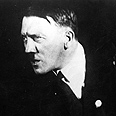
Rare photos: Hitler and his victims
Seventy years after Nazis invaded USSR, New York Times publishes photo album depicting Nazi leaders and victims of brutal campaign known as Operation Barbarossa
The New York Times published the intriguing photos on its website, later reporting that readers quickly identified the photographer as Franz Krieger.
Two pages in the album show prisoners of war seized by the Nazis on the Eastern Front of World War II. Some are dressed in rags, some in Red Army uniforms or jackets with Star of David patches. They are standing before what appear to be freshly dug graves, which may have been their own.
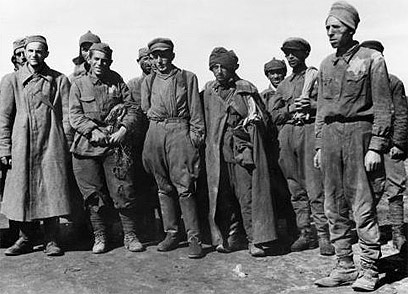
Four pages later, Hitler is seen waiting at a railway station for the arrival of the regent of Hungary, Admiral Miklos Horthy, ahead of their meeting at the East Prussian war headquarters known as the Wolf’s Lair.
Surprisingly, the photographer stands just a few feet from Hitler, almost the same distance separating him from the Führer’s prisoners.
"Clearly, this photographer had a lot of access — and not a little talent," the NY Times wrote. The photos were found in a perfectly ordinary, store-bought album which carries no identification or inscription.
According to the pictures, the photographer documented the progress through Eastern Europe of a bus convoy in the service of the Reichs-Autozug Deutschland, a Nazi Party unit responsible for the logistics needed to stage mass rallies. Judging from graffiti written on the dusty bus windows, the overall itinerary was Berlin-Minsk-Smolensk-Munich.
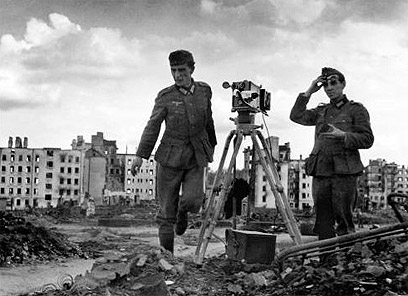
The album shows very little of the battlefield itself, which was distant, but the photos from Minsk document a great deal of destruction in the Belarusian capital, which was occupied by the Germans shortly after the beginning of Operation Barbarossa.
'Like Marlene Dietrich'
The album was loaned to the NY Times by a 72-year-old New Jersey resident working in the fashion industry, in the hope that the press coverage would increase its value.
The man would like to use proceeds from a sale of the album, which he hopes will reach hundreds of thousands of dollars, to pay medical bills and get out of debt.
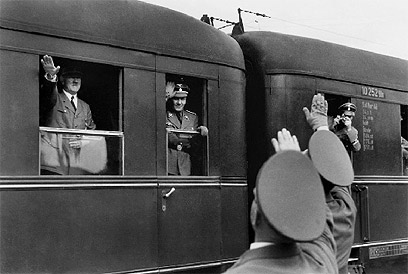
Hitler saluting from train's window (photo from NY Times website)
The man, who asked to remain anonymous, said the photo album was given to him along with 50,000 baseball trading cards by a manual laborer of his acquaintance, who borrowed money from him. The objects amounted to repayment of the cash loan.
He said the worker told him he had received the album from an old German man he had worked for in the past.
As the album includes nine pictures of Hitler, all those who saw it were certain that it must have some value.
“I knew I had a part of history,” the man said, “and I was very troubled about it falling into the wrong hands.”
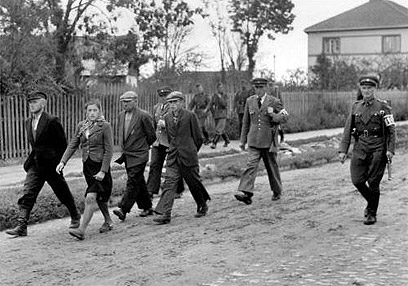
In an attempt to track down the photographer, the NY Times first turned to the United States Holocaust Memorial Museum.
“The photographer was clearly a professional and knew what he was doing, said Judith Cohen, the director of the photographic reference collection at the museum."It is possible that it is a personal album of a PK (Propagandakompanie – the field unit of the Wehrmacht’s propaganda corps) photographer.”
One of the prison pictures in the album turned out to be identical to a photograph from the Steven Spielberg Jewish Film Archive in the collection of Yad Vashem, the Holocaust Martyrs’ and Heroes’ Remembrance Authority in Jerusalem.
Thanks to this information, it turned out that the photo was taken at a prison camp in Minsk in 1941. The newspaper turned to Daniel Uziel, the head of photo collections at Yad Vashem, who said there were not many photos of marked Jewish POWs.
"Usually they were handed over to the SS within a very short time of their marking and were duly executed," he explained.
Experts who saw the album were intrigued not just by the pictures of Hitler and his victims, but also by a mysterious woman seen in the concluding part of the album, sometimes alongside the photographer and sometimes alone.
“She’s doing her best to look like Marlene Dietrich,” noted Prof. Marvin J. Taylor, the director of the Fales Library and Special Collections at New York University.
He called attention to the fact that the pictures were printed on two different types of paper and therefore may have been culled from a number of sources, not just the PK photographer’s own work.
- Follow Ynetnews on Facebook










